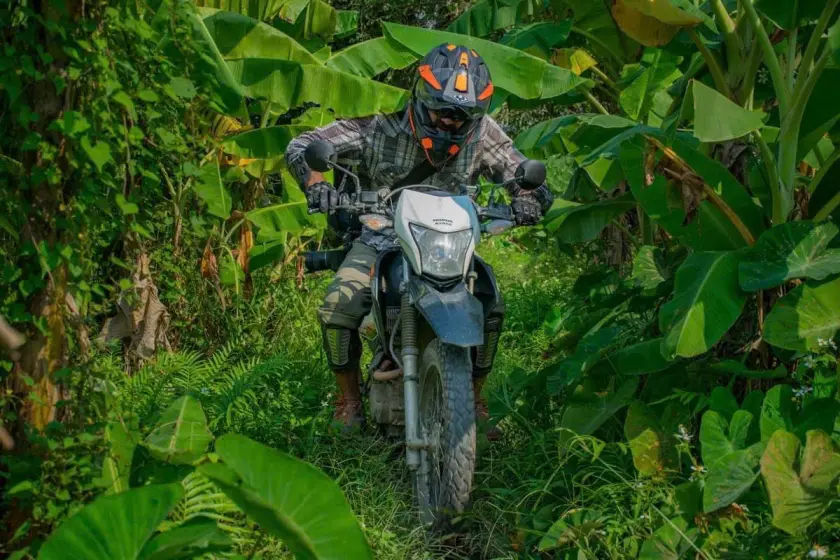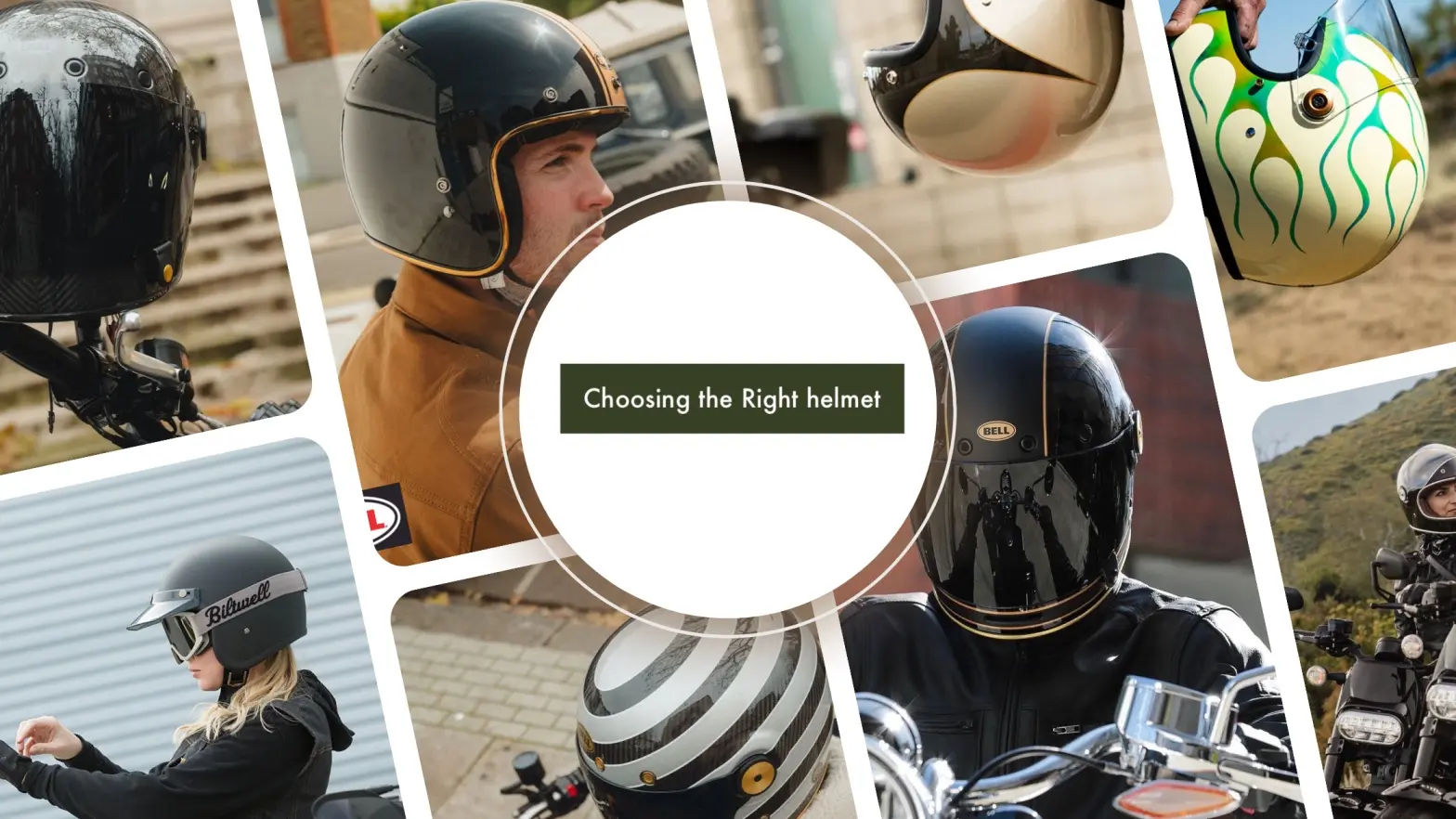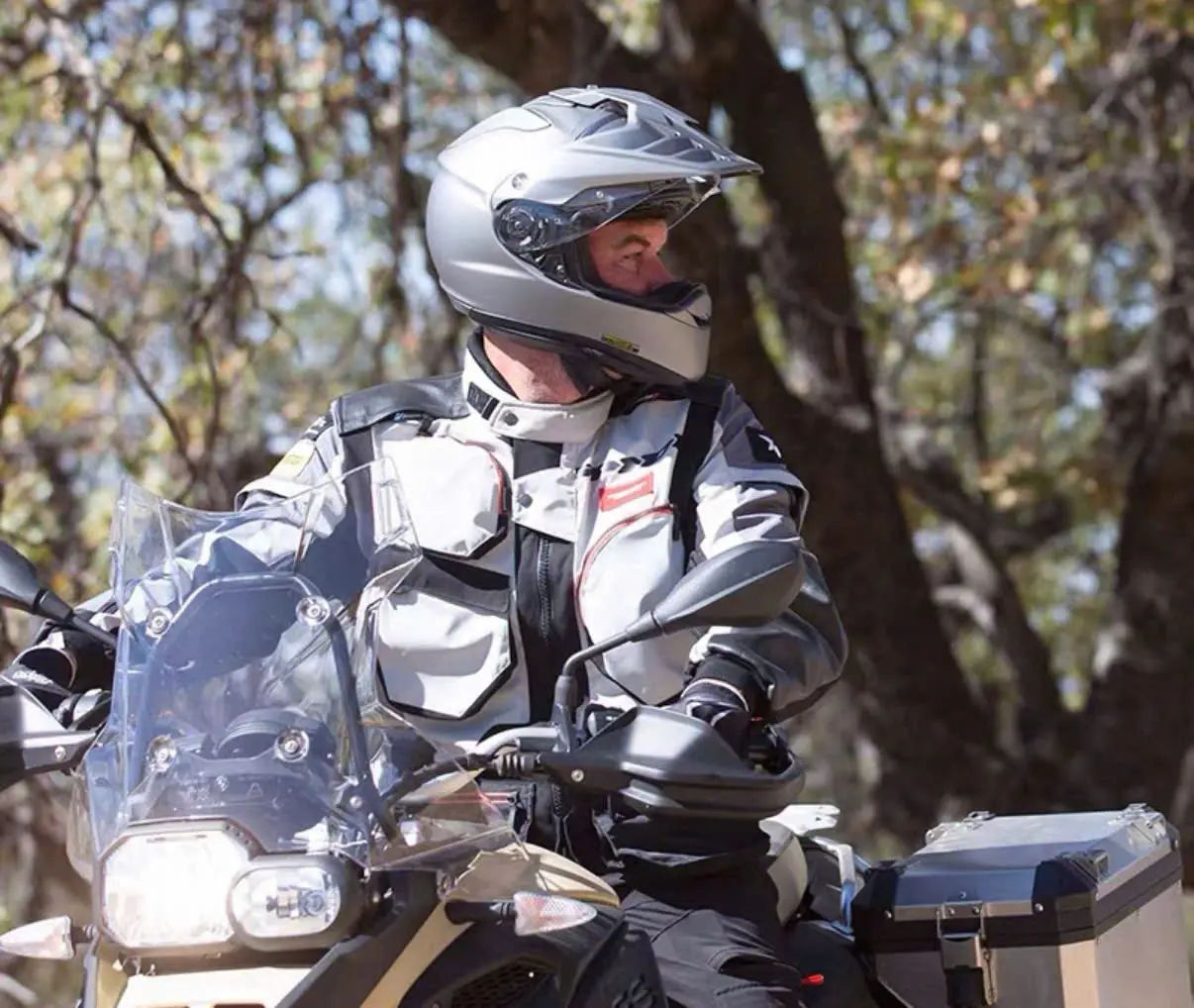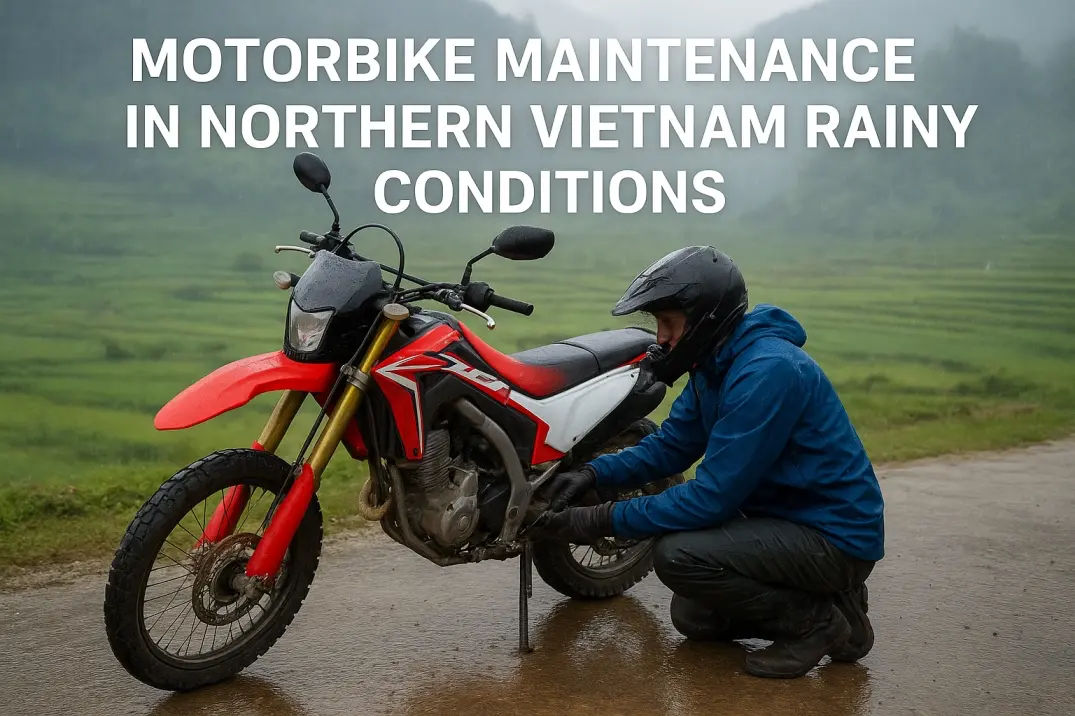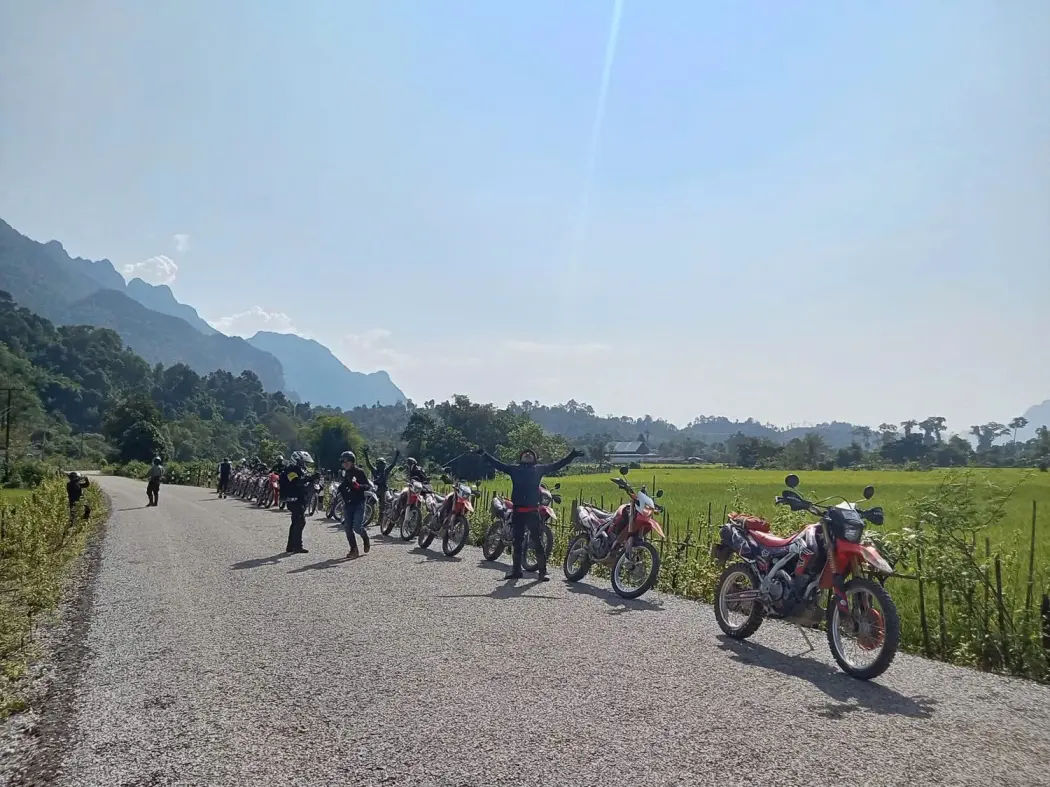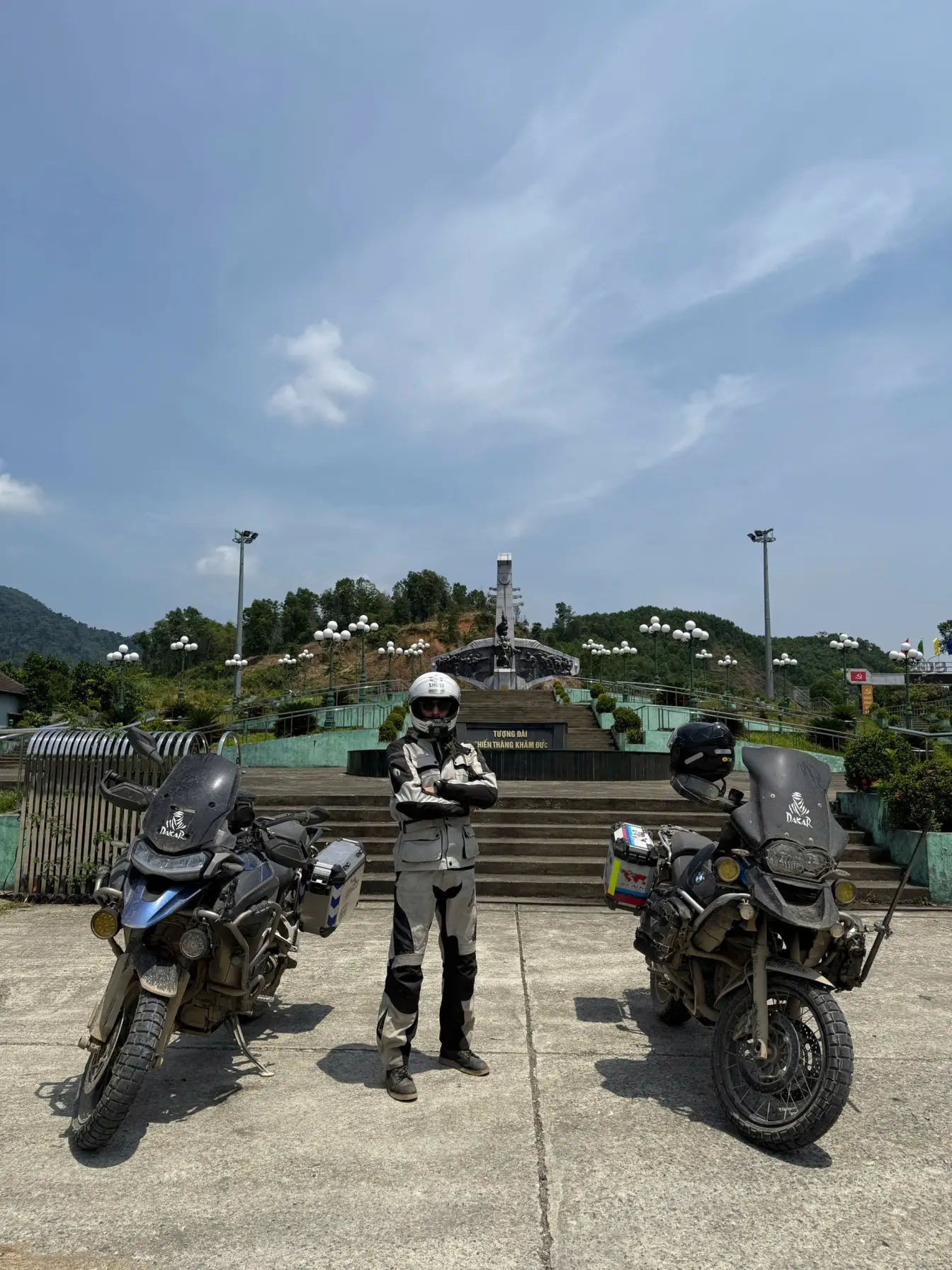
Riding through Northern Vietnam on a motorbike is one of Southeast Asia’s most unforgettable adventures, a journey filled with misty mountain passes, remote ethnic villages, and winding roads that stretch across breathtaking landscapes. But before you rev up for Ha Giang’s rugged loops or Sapa’s terraced valleys, it’s essential to pack wisely. In this guide to essential gear for Northern Vietnam motorbike trips, you’ll find everything you need to stay safe, dry, and comfortable, from reliable helmets and waterproof layers to navigation tools that can handle Vietnam’s unpredictable mountain weather.
- Check out Motorbike tours in Vietnam
Essential Gear to pack for Northern Vietnam Motorbike Trips
Helmet, a proper riding jacket ( leather one works too) pants, gloves, waterproof boots, and a reliable rain cover, these are the essentials every rider should pack before off for any ride around Vietnam’s winding mountain roads, not just the north, but Vietnam in general. The terrain here is as breathtaking as it is unpredictable, shifting from smooth highways to gravel tracks and misty hill passes in a single ride. Proper gear isn’t just about looking the part; it’s about staying safe and comfortable when the weather turns or the roads get rough.
A full-face helmet offers the best protection, the visor keeps dust away and best for riding around the backroads, while mesh-paneled jackets and pants with armor keep you cool and guarded. As you plan your 2026 motorbike tour, invest in gear that balances safety, airflow, and durability, it’s the smartest way to enjoy the freedom of Vietnam’s northern routes without compromising comfort.
- 15 days Hanoi to Saigon motorbike tours
- 12 days ride across Northern Vietnam
- Laos motorbike tours
- Cambodia motorcycle tours
Safety Essentials Every Rider Needs
As a motorbike tour organizer in Vietnam, we always gear up all riders with Helmet, gloves, riding jacket, boots, and knee guards, these are the safety essentials to pack and we also recommend it to every motorbike rider joining the Northern Vietnam regardless of number of days.
The region’s roads are surely stunning but also demanding, with sharp curves, uneven surfaces, and sudden weather changes. Investing in proper safety gear not only reduces the risk of injury but also helps you ride with confidence through rain, dust, or mountain fog.
- Check out Northern Vietnam most scenic routes
Helmets – Protection Comes First
A reliable full-face helmet (I’m not saying to buy a USD1500 one) is your first and most important gear for any types of riding, the north, the south, the center and or Ho Chi Minh Road.
Do not rely on motorcycle rental companies since they may offer you one along with the motorbike you rent, but that doesnt fit well in terms of a “proper helmet”, it’s also obvious since they’re only a rental company.
So it’s worth bringing or buying a better helmet with a clear visor (100% recommended for riding under the rain) and good ventilation which brings you a great visibility.
A proper fit keeps your head secure while long rides through mountain passes stay comfortable. The few good helmet brands I personally been using for over a decades are Shoei, Arai, Schuberth and so on.
- Check out how to buy a helmet while in Vietnam
Gloves and Riding Jackets for Different Seasons
When I was younger, I didn’t care much about wearing a glove, but trust me, the more you ride the big bike tours, the more you’ll need them to fit and match the class and style, and of course, the protection of the ride.
In the other hand, gloves and riding jackets are more than just style pieces, they’re your shield against the elements. Lightweight, breathable gloves are perfect for Vietnam’s scorching hot months, while insulated or waterproof ones keep you warm during the cool mountain mornings.
For jackets, choose armored mesh for the dry season and weatherproof textiles for the rainy months. In Northern Vietnam, where temperatures can swing from humid valleys to chilly peaks, layering smartly keeps you protected and comfortable all year round.
Boots and Knee Guards for Extra Protection
This may not be on everyone’s packing list (as far as I see the travelers riding motorbike in Vietnam), but again, you need one. A strong ankle boots and knee guards might not seem essential until you hit a patch of gravel or take a spill on a mountain curve. Durable, waterproof boots protect your feet from debris and rain, while knee guards add an extra layer of safety for rough terrain.
The key is comfort, gear that feels sturdy yet flexible enough for long rides and walking breaks. In the north’s mix of rocky trails and slick roads, these small additions can make a big difference to your safety and overall ride experience.
Weather-Ready Gear for Northern Vietnam Conditions
So, you’re ready for the north, north-west and or the famous Ha Giang Loop , there is one thing I need to mention before I start this paragraph, the Northern Vietnam throws every kind of weather at you, all in one day, yes, that’s a big surprise for travelers whom never been to Southeast of Asia and specially to Vietnam.
Packing weather-ready gear isn’t just about comfort; we bikers to be honest, not thinking much about comfort, but protection and ease of ride. Imagine a sudden rainstorms, cool mountain air, and tropical humidity that define these routes. I’ve learned the hard way that what feels fine in Hanoi can turn into a challenge up north, where fog rolls in fast and temperatures drop without warning. Investing in the right rain gear, thermal layers, and cooling accessories can completely change how you experience the ride.
- You may want to check our handpicked Motorcycle tours in Northern Vietnam
Rain Gear and Waterproof Clothing
I used to ride with just a light poncho I bought at a roadside stall on my easy days of staying in Hanoi, it kept me somehow dry for about ten minutes before the rain soaked through. Now, I swear by a proper waterproof riding jacket and pants with sealed seams, if you ask me what I wear now, I suggest Givi Rain Jacket.
They’re not cheap (expect to pay around $60–$120 for a decent set), but they’ll last through countless downpours. A compact rain cover for your backpack and waterproof gloves also make a big difference when the skies open up. In Northern Vietnam, sudden showers are part of the adventure, so having real rain gear means you can keep riding without shivering at every stop.
Thermal Layers for Cold Mountain Rides
When I first rode (back in 2009) through Dong Van in November, I was caught off guard by how cold the mountains get after sunset (trust me, it will get cold). Now, I always pack light layers and a windproof jacket. A good fleece mid-layer costs around $30 and adds serious warmth without taking up much space in your bag. I’ve found that layering smartly thermal top, mid-weight fleece, and a waterproof outer shell, keeps you comfortable even when the temperature dips below 10°C. In the highlands, where the wind bites hard, those extra layers turn a freezing ride into an unforgettable one.
Cooling Accessories for Hot and Humid Days
On humid summer rides through Mai Chau or Bac Son, you’ll sweat so much, it feel like riding through a sauna. These days, I pack a lightweight, a riding jersey and a jacket, a neck gaiter, and a cooling vest if I’m planning long days on the road. They might seem unnecessary at first, but once the afternoon sun hits, you’ll be thankful for anything that keeps the heat at bay. Most cooling vests and arm sleeves cost between $20 and $50 and can make a huge difference in how long you can ride comfortably. Staying cool means staying alert, and that’s key when tackling Vietnam’s winding mountain roads.
Packing and Storage Essentials
One of the biggest lessons I learned from my first motorbike trips during all these years was that how you pack matters just as much as what you pack. Between sudden rain showers, dusty backroads, and endless mountain curves, good pannier, box, or soft bags can save you a lot of headaches. A mate lost his riding boots between Dalat and Mui Ne just b because of not properly packing them up.
Over time, I’ve figured out that investing in waterproof bags (there are a lot of local brands, so I won’t really suggest to buy from the big brands, oh, wait, I have nothing against them), a small toolkit, and a simple first aid kit makes your trip smoother, safer, and way less stressful, especially when the next town is hours away.
Waterproof Bags and Saddlebags
On my first loop, I tied a regular backpack to the back of my 250cc bike, that was a big mistake. One heavy rain later, everything inside was soaked. Since then, I’ve switched to waterproof saddlebags and a roll-top dry bag, and it’s been a game-changer.
A decent set costs around $100, and they’ll protect your gear through mud, river crossings, and monsoon storms. Look for durable straps and buckles, The roads around the north can shake everything loose if it’s not secured properly. Keeping your clothes and electronics dry isn’t just comfort; it’s peace of mind when the weather turns wild.
Compact Toolkits and Tire Repair Kits
I once got a flat tire in the middle of a quiet mountain stretch near Yen Minh, no mechanic in sight. That’s when I learned the value of carrying a compact, small handy toolkit and a tire repair kit. A small set with a wrench, screwdrivers, pliers, and a portable air pump weighs almost nothing and costs about $25–$40. These tools can get you back on the road when help is hours away. Most riders underestimate how rough Vietnam’s roads can be on tires, but a quick fix can turn a potential disaster into just a short break with a view.
First Aid Kits and Emergency Items
After a minor spill near Ba Be Lake, I realized how essential a first aid kit really is. Nothing serious, just a few scrapes, but having antiseptic wipes and bandages saved me from an infected wound later on. I now carry a compact kit with pain relievers, gauze, adhesive tape, and electrolyte packets.
Throw in a flashlight, power bank, and emergency blanket, and you’re set for unexpected stops or delays. A solid kit costs around $20–$40, but it’s worth every dong when you’re far from the nearest pharmacy. In the mountains, being self-sufficient means staying safe and confident no matter what happens on the road.
Navigation and Communication Tools
Getting lost while off-road in the middle of rice fields and or lush bamboo forest can be a hassle. The mountain scenery is breathtaking, but when fog rolls in or mobile service drops, you’ll wish you had solid navigation gear. Luckily, most of the carrier in Vietnam, cover almost all the areas very well and even in most remote lands, you’ll have reception to call and the 4G to use internet.
I’ve learned that reliable GPS tools (even though I rarely use it), offline maps, and good caro systems, or at least Bluetooth connection between the riders aren’t just for convenience, they’re what keep you on track and in touch when the road gets tricky.
Over the years, I’ve gone from relying on phone apps to a more reliable setup that makes navigating Vietnam’s wild northern routes smoother and far less stressful.
Caro system, GPS Devices and Offline Maps
Almost on all our rides, beside depending entirely on Google Maps, i use a dedicated GPS device with offline maps, or just Cardo system, which cost about $100–$200 depending on the brand. It’s a small investment for peace of mind, especially when you’re hours from the nearest town. I also keep Maps.me and OSMAnd downloaded on my phone as backups; they’ve saved me more than once. In the mountains, where roads can split unexpectedly, a good offline map is worth its weight in gold.
Mobile Mounts and Power Banks
All the bumpy road near Cao Bang, Sapa, Ha Giang, Bac Ha or Ba Be can shakes you the way your phone slide away from your USD5 phone holder. Recommended to use a sturdy mobile mount, I use SPphone, or Qucdlock, I can’t recommend anything else and, this is not a sponsored listing, its just my own personal experience.
A waterproof mount with a firm grip costs about $20–$40 and keeps your phone secure even on rough terrain. I always pair it with a high-capacity power bank or USB charger wired to the bike battery, since GPS drains power fast on long rides. Keeping your navigation visible and charged means you can focus on the road instead of worrying about your next turn.
Communication Systems for Group Rides
When I first rode the Sapa Loop with friends, we relied on one rider stop and wait for others, or just try the hand signals, not the best idea when you’re spread across winding mountain roads. Now we use Bluetooth intercoms or helmet communication systems and Cardo, which let us talk clearly even at 60 km/h. A good set costs between $80 and $150 and connects up to four riders easily. It makes a huge difference for safety and coordination, especially when someone spots road hazards or wants to pull over. Riding in a group becomes smoother, safer, and a lot more enjoyable when everyone can stay connected on the move.
A lot of our riders, when joining our tours, bring their own communication system, they used it, trust it and they’re happy with it, you should do the same.
Recommended Gear for Adventure Riders
Adventure riding in Northern mountains, or anywhere else in Vietnam is an experience that demands both experience and preparation. The rugged roads, river crossings, and steep dirt trails will test your skills and your equipment. I’ve learned over countless rides that having the right setup makes all the difference between a thrilling adventure and a frustrating slog. Whether you’re tackling Ha Giang’s off-road loops or cruising around Hanoi’s outskirts, your gear should match your route, sturdy protection for the wild trails and lightweight comfort for short city trips.
Off-Road Gear for Ha Giang and Mountain Routes
My first Ha Giang ride was on a rented semi-automatic bike and a cheap helmet, I wouldn’t recommend repeating that (I still see a lot of backpackers the same way). The terrain there is rough, unpredictable, and breathtaking all at once. These days, I gear up with an adventure-style helmet, off-road boots, and lightweight jacket.
It’s not overkill, it’s what keeps you safe when you hit gravel, mud, or sudden drops. A good set of knee and elbow guards costs about $40–$70, and decent boots around $100, but the protection is priceless when your tire slips on a rocky corner. Off-roading in Northern Vietnam is pure freedom, as long as you’re prepared for it.
Lightweight Options for City and Short Trips
For short rides around Hanoi, Ninh Binh, or Ba Be, I prefer to travel light. After years of packing too much, I’ve realized that less really is more when it comes to city or weekend rides. A ventilated riding jacket, open-face helmet, and ankle-high boots are usually enough. I often use riding jeans with built-in knee pads, they look casual but still offer good protection. A setup like this runs around $80–$150 total and feels perfect for Vietnam’s warm, humid days. You can move easily through traffic, stop for coffee breaks, and still be protected if the roads get a little wild. It’s all about finding that balance between safety and comfort when you’re just chasing the joy of the ride.
- Check out 4 best routes from Hanoi to Ninh Binh
Conclusion: Packing for Motorcycle Adventuring (The Essentials)
After countless rides through Vietnam’s northern mountains, the cloud-wrapped roads of Ha Giang to the quiet valleys of Bac Kan. I’ve learned that the right gear transforms the journey. It’s not about overpacking with loads of expensive gears, but about choosing smart, reliable essentials that keep you safe, dry, and comfortable no matter what the road throws at you. So before you hit the throttle, double-check your setup and ride with confidence. Essential Gear for Northern Vietnam Motorbike Trips: Ride Smart, Stay Safe, and Explore Confidently — because the best adventures start with good preparation and an open road ahead.
FAQs: Necessary Packing List
What is the most important safety gear for motorbike trips in Northern Vietnam?
A proper full-face helmet, with clear visor is the most important piece of safety gear, it offers maximum protection for your head and face on unpredictable mountain roads.
How should I pack my gear for long motorbike journeys?
Use waterproof saddlebags or dry bags, pack light, and secure everything tightly. Keep essential items like rain gear and tools easy to reach.
What clothing is best for rainy or cold conditions?
Layer up with light layers, a fleece mid-layer, and a waterproof riding jacket and pants. Sealed seams and breathable materials keep you warm and dry.
Can I rent motorbike gear in Vietnam?
Yes, but quality varies. It’s best to bring your own helmet and jacket, as local rental gear often lacks proper safety standards.
What tools should every rider carry for emergencies?
Carry a compact toolkit, tire repair kit, flashlight, and first aid kit. These basics can handle most roadside issues until you find help.
What are the Emergency Contacts For Travelers In Vietnam?
- Police: 113
- Fire: 114
- Ambulance – First Aid: 115
- Weather forecast: 1080
- Domestic long distance telephone service: 101
- International telephone service: 110
- General information service: 1080
- Law Consultancy service: 1088
- Phone number enquiries: 116
Vietnam Country Code: +84 – International Call Prefix: 00 – Trunk Prefix: 0
About the author
Hamid is an adventure rider and travel writer who has spent years exploring Southeast Asia’s most scenic and challenging routes on two wheels. From misty mountain passes to hidden coastal roads in central Vietnam, he’s logged thousands of kilometers chasing unforgettable rides and local stories. When he’s not on the road, Hamid shares his first-hand insights to help other riders travel smarter, safer, and with a sense of adventure.




